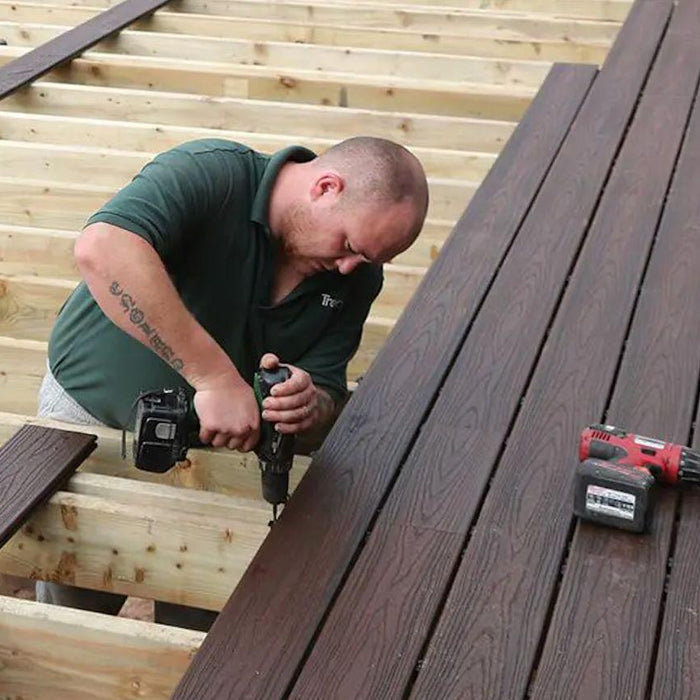When it comes to making eco-conscious choices in timber projects like DIY, understanding the pitfalls and potentials of various timber products is crucial. There's a world of difference between materials, especially when you're aiming for sustainability in woodworking. Let's delve into the realm of OSB Boards and other related timber building materials, decoding the choices that impact both your project and our planet.
Understanding OSB Boards
OSB Boards, or Oriented Strand Boards, are a popular choice in modern construction. They are manufactured by layering strands of wood in specific orientations, bonded together with adhesives. OSB is commonly used in roof shingles, flooring, and even decking. It’s celebrated for its versatility and cost-effectiveness. But what makes OSB truly sustainable?
The Sustainability of OSB
Sourcing wood responsibly is a key component of sustainability. OSB production utilizes fast-growing species such as aspen or poplar, trees that are often overlooked. This usage reduces the pressure on slow-growing species, promoting ecologically balanced forestry practices.
Key Features of OSB
-
Durability: Known for its impressive strength and rigidity.
-
Efficiency: It utilises smaller, fast-growing trees and less wood overall compared to traditional lumber.
-
Versatility: Suitable for a multitude of applications from wall sheathing to roofing.
For those considering the use of OSB in garden improvements, the material’s strength and sustainability make it an excellent choice.
Comparisons with Plywood
When comparing OSB to Plywood, it's essential to factor in the intended application. Like OSB, Plywood is a product of engineered wood, but its production involves binding thin layers of veneer, which generally leads to a smoother surface.
Plywood is often favoured for projects requiring a finer finish. That said, OSB offers comparable performance levels at a fraction of the cost, especially in timber framing and decking.
Cladding Choices: Log Lap and Shiplap
For those looking to enhance appearances with timber claddings, options like log lap cladding and shiplap cladding present attractive possibilities. Here's a brief dive into their benefits:
Log Lap Cladding
-
Aesthetic Appeal: Offers a rustic look, enhancing structures with a natural touch.
-
Insulation: Great insulating properties due to the thicker timber profile.
Shiplap Cladding

-
Weather Resistance: Its design helps to improve water runoff, perfect for exterior cladding in a damp climate.
-
Ease of Installation: Shiplap comes in easy-to-install panels, a boon for any DIY enthusiast.
For a project requiring shiplap cladding, consider the 16x125 T&G Tanalised Treated Shiplap and 16x100 Tanalised Treated Shiplap. These options provide treated timber that's ready to withstand varying UK weather conditions.
Sustainable Framing Options

Framing is the backbone of architecture, and choosing the right kind can impact your project's longevity and environmental footprint. For sustainable choices, tanalised timber framing is the go-to.
-
Rot Resistant: Treated to withstand the elements, especially useful in areas prone to damp.
-
Sustainable Source: Often sourced from managed forests, ensuring minimal environmental impact.
Check out the 3x2 (50x75) Tanalised Timber Framing for an eco-friendly option that does not compromise on durability or performance.
Roofing Considerations

When dealing with roofing, the materials chosen can play a huge role in both sustainability and performance. Roof tiles and roof felt are standard, but their eco-impact varies.
For sustainable solutions in roofing, OSB is frequently paired with breathable membranes such as the Strotex Breathable Membrane - 50m x 1m, allowing moisture to escape, preventing wood decay, and maintaining the insulating properties of the structure.
The Hook: Imagine This
Imagine embarking on a DIY garden shed project. You've opted for OSB Boards for the roof, due to their strength and ecological benefit. Beneath, you've installed the Strotex Breathable Membrane, eliminating potential moisture build-up and ensuring longevity. With shiplap cladding, your shed not only stands resilient against the weather but also complements the lush greenery with its sophisticated aesthetics. This sustainable choice is kind to the earth and promises a structure that endures.
Installation and Delivery
Most timber building materials, including OSB Boards and claddings, arrive in standard sizes. They are straightforward to cut and fit, accommodating both professional builders and passionate DIYers. For products like the tanalised framing or shiplaps, timberdiy.com ensures seamless delivery, offering assistance and advice tailored to your specific project needs.
Final Thoughts
Choosing the right materials for your construction or improvement project influences both its success and its environmental footprint. OSB Boards and related products provide durable, cost-effective, and sustainable solutions capable of meeting the needs of various applications.
To explore more about sustainable timber products, visit the Timber DIY website.
Embrace the sustainable route and make choices that foster both a stunning project outcome and a healthier planet. From decking to garden sheds, your decisions can truly make a difference in the world of woodworking.







